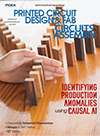News
News
Weathering a Trade Show Storm
Published: 04 September 2008
by Susan Mucha
Tips on maximizing ROI under the most severe conditions.
The interesting element of these “I survived” shows is that prepared and creative exhibitors stand out. As I walked the floor the first day of the show, I saw some exhibitors sitting in chairs, consigned to a low turnout. However, other exhibitors took a totally different approach. They either had prepared well in terms of promotional efforts or were determined to make the best of a bad situation.
Shows like this teach good marketing lessons. I spent a morning discussing the situation with several exhibitors and thought it valuable to share their perspectives.
Henri Henderson, regional sales manager at Pentagon EMS (pentagon-ems.com), a production tooling company, saw a potential positive impact. “People who have flown into the conference will come to the show because the storm limits their other options,” he observed.
His was a particularly interesting take because the show was held in a Disney resort and had the weather been pleasant, it is highly likely some out-of-town attendees might have chosen golf or sightseeing over the show. The Pentagon EMS booth was positioned near the show entrance and had paddleball giveaways, which can be traffic builders at slower shows.
Humor was also a theme at Zurvahn’s booth (zurvahn.com). The EMS provider’s giveaway was a pill bottle filled with candy with the slogan, “your EMS headache relief.” While not specifically tied to the storm, it was a good icebreaker to have on hand and, coupled with a plate of cookies, tended to stop traffic long enough for initial prospecting conversations.
Celestica (celestica.com) applied solid trade show planning by linking exhibits with a strong technical program support element, which included participation on three panels, four session chair or co-chair slots and six paper presentations or co-author credits. This strategy is particularly strong in this type of show because it staggered Celestica’s name and image over several days and multiple networking opportunities, and reinforced its commitment to the sponsoring organization, SMTA. Even if one day were impacted by the storm, there were still multiple opportunities to showcase Celestica’s technical expertise to different audiences. According to Dave Ellison, business development manager, the show was also a good opportunity to introduce the name change of Celestica’s engineering business unit from Engineering Services to Performance Innovation.
One of the more creative booth traffic builders was the indoor virtual golf course at Ascentec Engineering’s (ascenteceng.com) booth. The tooling company set up a Wii game console and a flat panel monitor and invited attendees to compete for prizes.
Viscom (viscom.com), a supplier of AOI and AXI equipment, used basic sales prospecting techniques. Its booth was adjacent to several larger capital equipment suppliers. According to Eric Moen, regional sales manager-East, the idea was to start as many conversations as possible, but to also pay particular attention to attendees engaged in lengthy conversations with the large capital equipment exhibitors, because inspection equipment might be a secondary purchase. This common sense, disciplined selling approach was generating a few good leads.
SIPAD Systems, Inc. (sipad.com) took a similar approach. President Matt Kehoe was also a Nepcon West earthquake “survivor.” The company provides solid solder deposit coating services, laser cut stencils and printed circuit engineering. According to Kehoe, the technology is a good draw at any show. But SIPAD complements this with significant participation at SMTA chapter and conference program activities. Booth visitors could get sample boards to test at their facilities.
There is no question traffic was down at SMTAI this year, but, as these examples show, some exhibitors were working hard to maintain a positive attitude and cultivate good business from the existing traffic. Every trade show is an investment. In this market, some may be slow, the result of bad economy or bad timing. Every once in a while, Mother Nature may also contribute. This is the time when creative marketing and disciplined sales approaches can make the difference between good trade show return on investment or simply wasted money. Before you pack your booth, consider whether your trade show strategy has room for improvement. And, if disaster strikes, remember some exhibitors will find a way to still have a good show. Make sure your team has the resources and enthusiasm they need to weather any trade show storm.
Susan Mucha is president of Powell-Mucha Consulting Inc. (smucha@powell-muchaconsulting.com), a consulting firm providing strategic planning, training and market positioning support to EMS companies. She is the author of Find It. Book It. Grow It. A Robust Process for Account Acquisition in Electronics Manufacturing Services.
Press Releases
- NEPCON ASIA 2025: Innovating Smart Manufacturing Ecosystems and Bridging Global Opportunities
- Viasion Technology Expands Global Reach as a Trusted PCB Manufacturer and EMS Provider in China
- Viasion Technology Expands Global Reach as a Trusted PCB Manufacturer and EMS Provider in China
- Nordson Test & Inspection Expands Partnership with Distributor smartTec Nordic A/S







